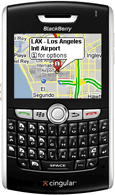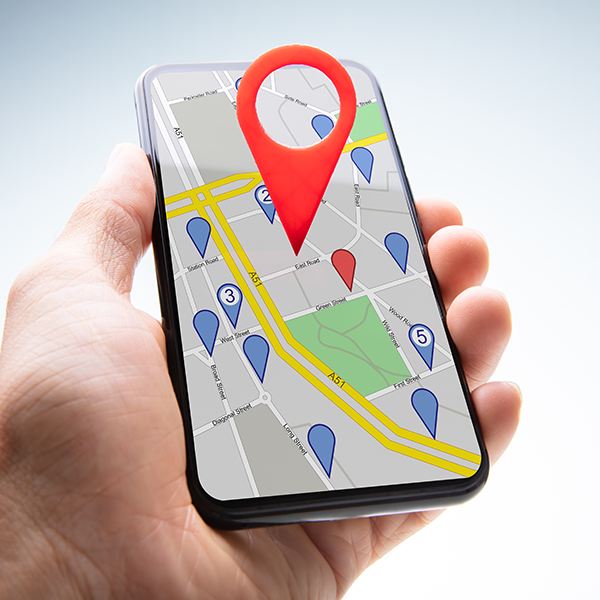Google Maps: The Best and Worst of Mobile Web

by Michael Phillips
06 May, 2008
In our May issue of Website Magazine, we explore the Mobile Web - it's usefulness, hopes and hypes. One application that typifies the brilliance and struggle of the mobile space is Google Maps for Mobile.
The Bad
Of course with any mobile application, there are bound to be some drawbacks. Google Maps for Mobile is not immune.

* testing was conducted using a BlackBerry Pearl
Subscribe to Website Magazine's Consumer Corner!
| One of the most widely used applications on the Mobile Web is local search. Searching for local businesses, hours of operation, maps, telephone numbers are all good resources for the mobile browser. So, it only makes sense that an application that puts it all in one place would be an ideal use for a Web-enabled mobile device. Google Maps for Mobile features and outstanding set of resources for the mobile browser but also some limitations. It's true that as the Mobile Web evolves, 3G connectivity sets in and devices get more advanced, many of the frustrations of mobile browsing will subside. But for those who want to explore now, Google Maps for Mobile offers an excellent testing ground.* |
 |
The Good
Google Maps for Mobile is impressive. One of the first steps is to find "my location." The screen says "my approximate location within 500 meters," but the icon was placed just outside my front door. Once you have your location set, you have some options to play with.
- Search for addresses. You can find just about any location by entering an address. Type it in and the map will shift to show the new location. If you don't know the address, enter the intersection. But it helps to be precise - a search for "Michigan and Monroe" brought me somewhere near Valparaiso, Indiana. After entering "Michigan and Monroe, Chicago, IL" I was taken directly to the downtown Chicago intersection. From this menu, get turn-by-turn driving directions, mileage and estimated travel time too.
- Search nearby. After finding the location you want, "search nearby" for hotels, restaurants, gas stations ... whatever. You will get a list of businesses, complete with addresses and telephone numbers. Another click maps all locations. Click on a particular location and get detailed information including clickable phone numbers. A nearby hotel search can deliver details such as check-in times, star ratings, activities, amenities and much more. In the same menu, get directions to the hotel based on your current location. Once the hotel is selected, search for nearby restaurants (or pizza, Italian, etc.) and get mapped locations and details including hours of operation, price levels, parking info and even ratings from Zagat.com, WineSpectator.com and others.
- Traffic info. After any search, request for driving directions or any map view, you can choose to show traffic conditions. Click another button to hide traffic info. You can search for specific highways or set a "favorite" in a particular view of several highways to get a nice snapshot of overall traffic.
- Favorites. Save searches, map locations and driving directions in your "favorites." This saves time by eliminating the need to repeat the same search again and again when you have some locations where you may return, or want to keep a listing of nearby businesses.
- The Visuals. The default setting is the "map view," familiar to most when using Google Maps from a PC. It's clear, precise and street names are easily visible. You can also switch to satellite view. Zoom in or out using buttons on your keypad. The detail is truly amazing. I was able to zoom in and see the outline of home plate at Wrigley Field, even two groundskeepers watering the infield - so close that you can see water streaming from the hose. I also checked out the famous flying buttresses of Notre Dame Cathedral in Paris.
The Bad
Of course with any mobile application, there are bound to be some drawbacks. Google Maps for Mobile is not immune.
- Memory. It's an absolute memory hog. On my device, I spent about 30 minutes playing around with Google Maps and started running into problems. My mobile will start deleting "non-essential" items from its memory when it starts to run low. This includes text messages (sent and received) and call logs. Granted, I have many photos on my phone and some downloaded applications, but my available memory was quickly filled. Make sure you clean your browser cache after using.
- It's Sluggish. Even after a fresh memory cleaning, the service is fairly slow. Scrolling around the map and zooming in and out can be problematic. Even scrolling through listings and details of a particular location is slow, causing frustration and some misfires when trying to select an option or a particular location. Slow and sluggish is not what keeps mobile users coming back for more.
- Locations and Other Details. Not all locations you might want are displayed. Of course, the limited space of a mobile screen is one cause, it could be problematic listing every pizza joint in Chicago. But for the mobile browser, limited locations might be desired anyway. After saving a "favorite" the map stays in it's current form. If you happened to zoom in tight on a favorite location, it will stay that way next time you pull it up. In order to see what surrounds that favorite location, you'll need to go through the slow process of zooming out again. Finally, the more details, the better. As noted previously, if you don't enter some specifics, you may find yourself in a completely different location than you intended. Searching for vague terms can dot the maps with so many locations it's hard to see where they are. Then you have to either know approximate addresses, or slowly move around the map to find what you're looking for.

* testing was conducted using a BlackBerry Pearl
Subscribe to Website Magazine's Consumer Corner!

Michael Phillips
Masson specializes in helping brands articulate their purpose and communicate their value—through naming, campaigns, pitch decks, copy, video, and multi-platform, targeted content series.
Subscribe to Our Newsletter!
Latest in Mobile Marketing










